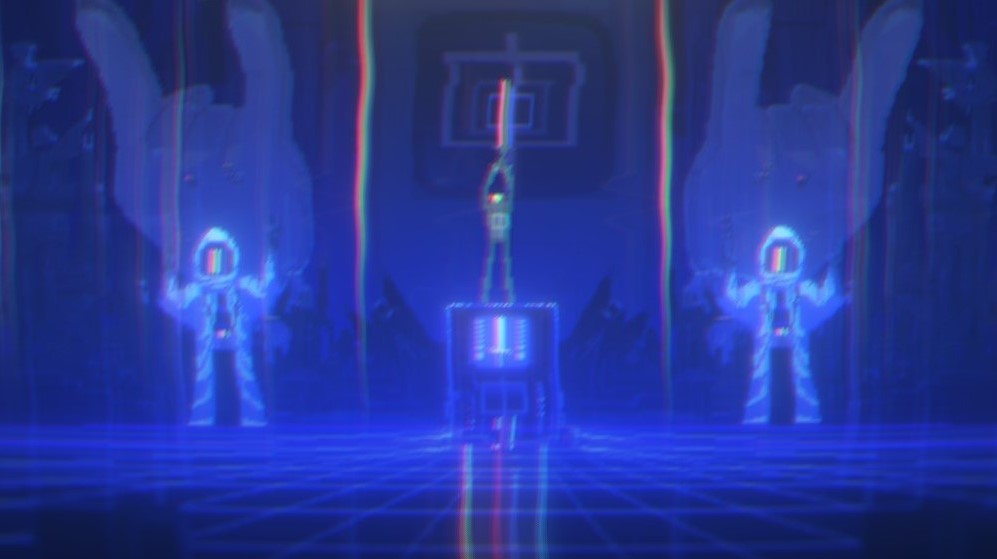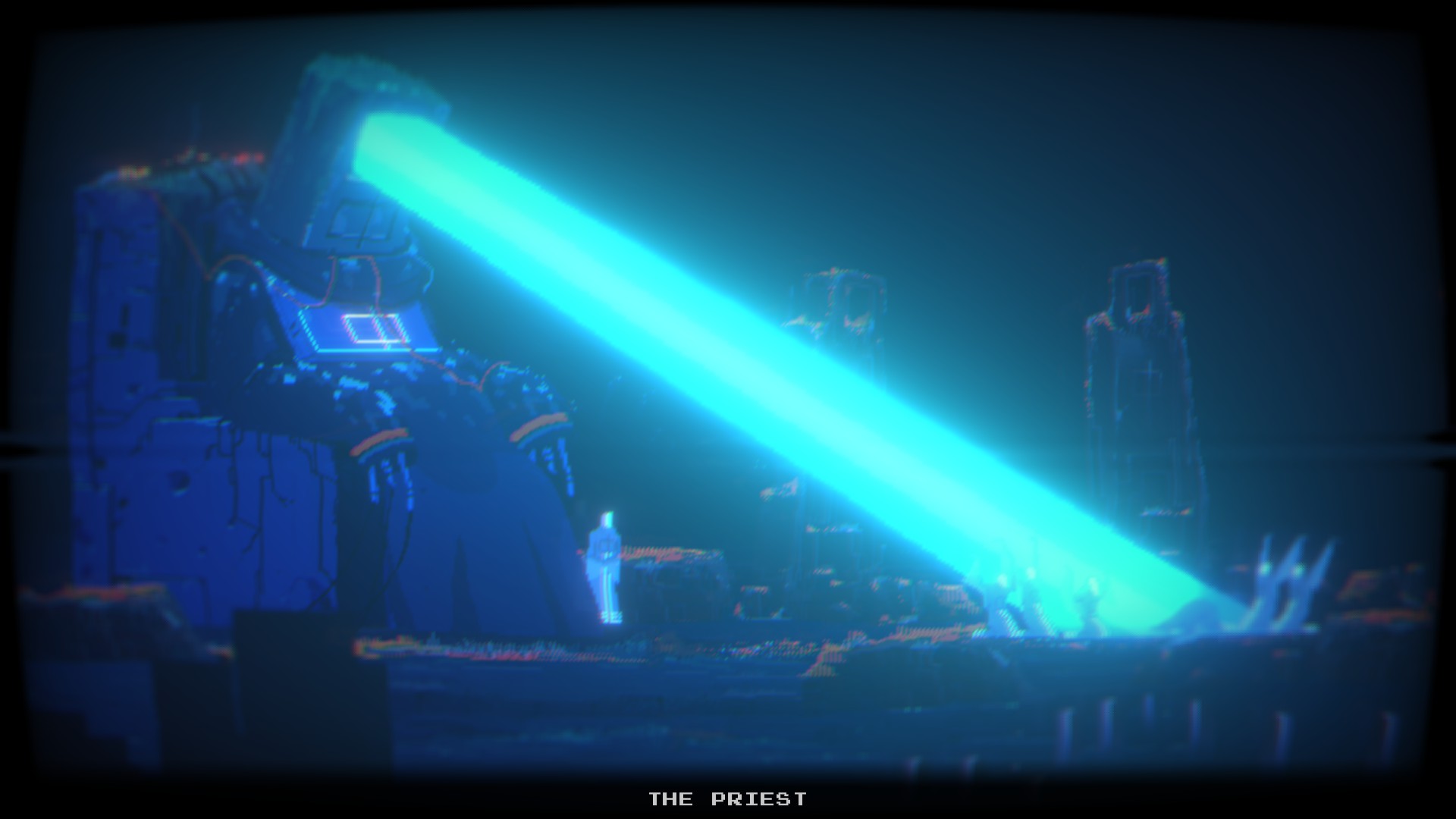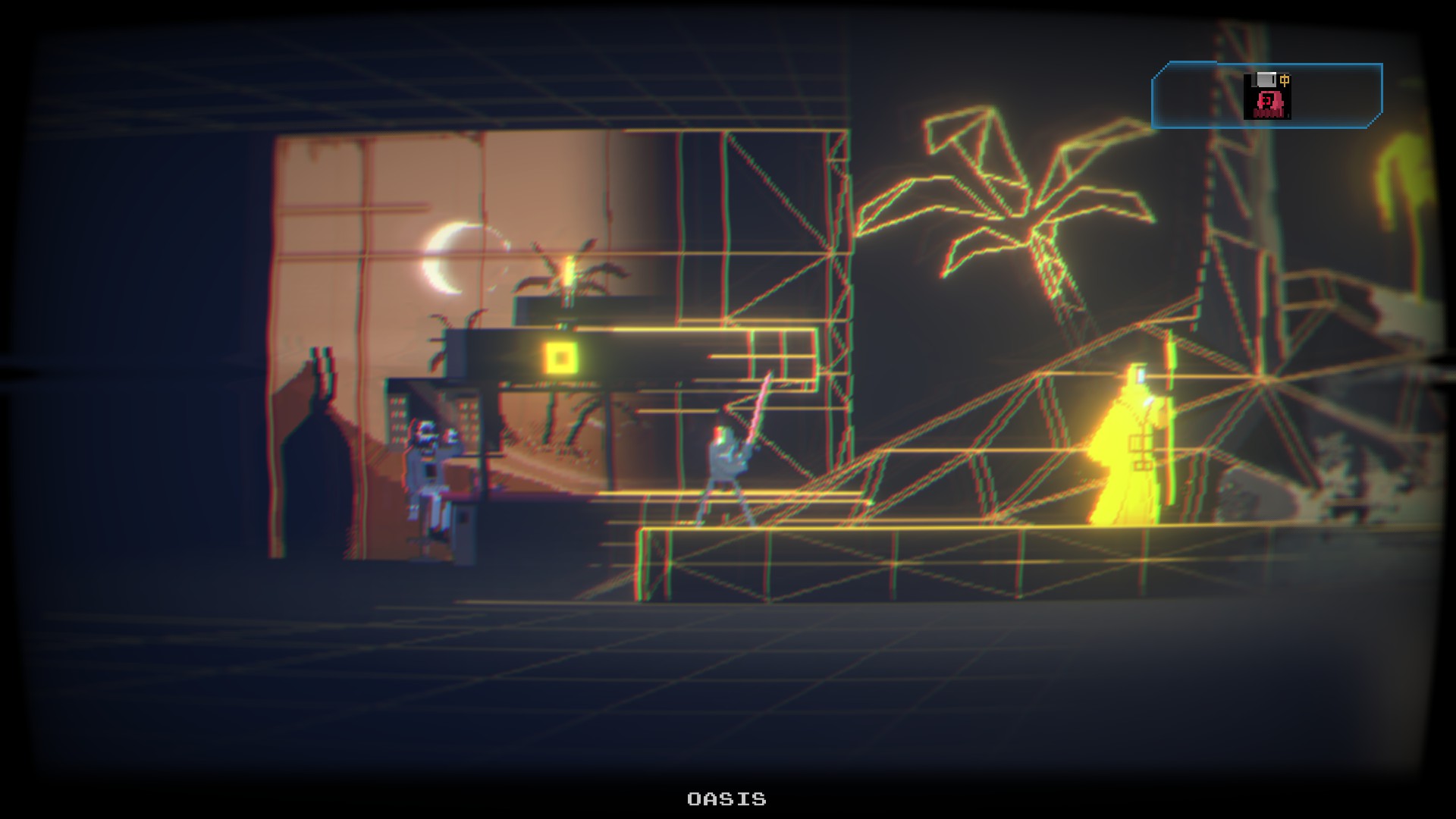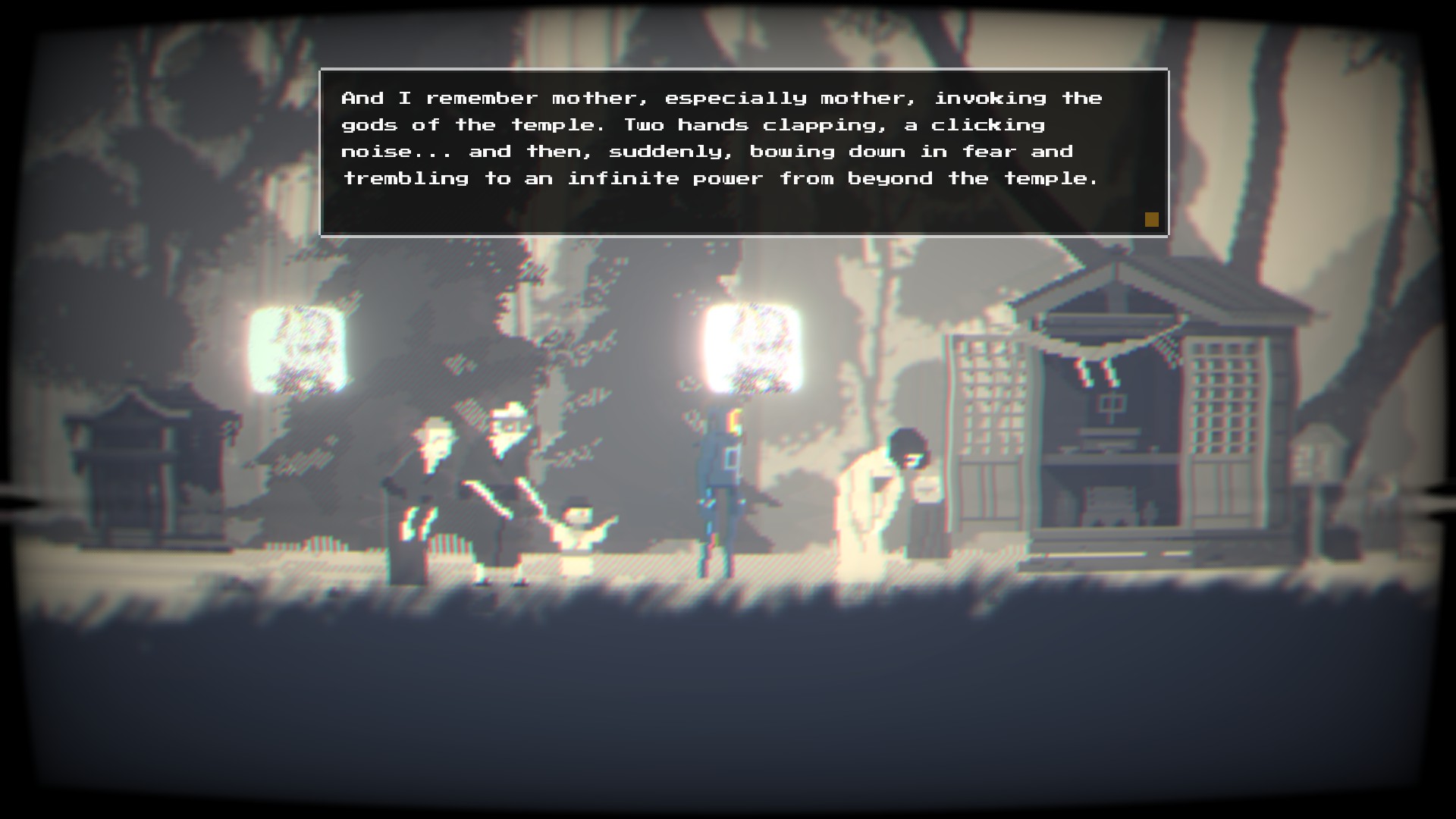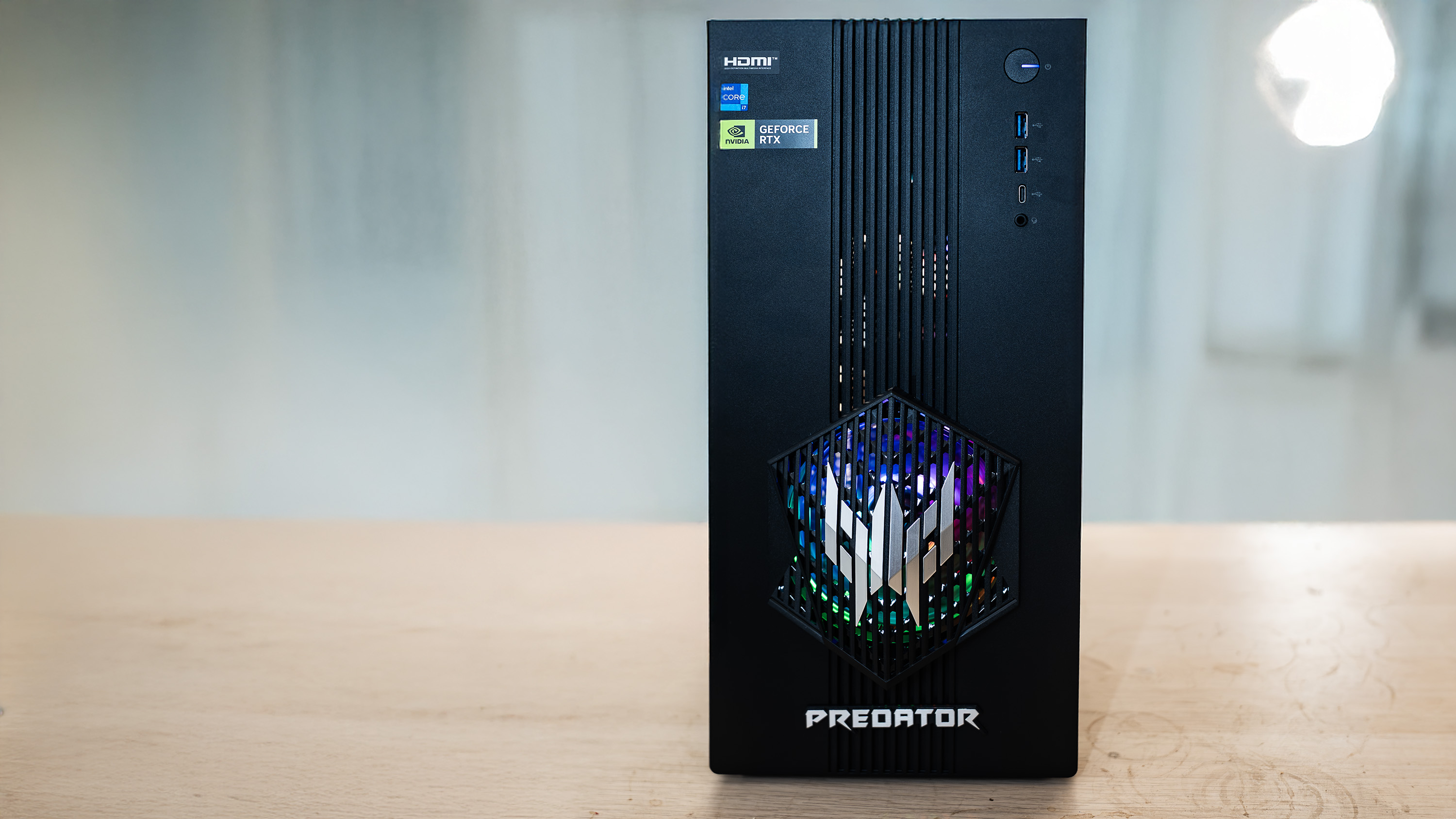Our Verdict
Narita Boy's digital twist on a classic fantasy tale is engrossing if a bit disorientating.
PC Gamer's got your back
What is it? An '80s inspired platformer with a digital-fantasy twist.
Expect to pay TBA
Developer Studio Koba
Publisher Team17
Reviewed on AMD Ryzen 5 3600, 8GB, AMD Radeon RX 5700 XT
Multiplayer? No
Link naritaboy-game.com
It's nothing short of blasphemy mentioning a game console on a PC website, but I hope the desktop gaming gods will forgive me this time. Narita Boy is a platforming action-adventure that takes place inside a game console that's had its circuits, wires, and lines of code transformed into an intricate digital empire.
Playing as the titular pixel hero Narita Boy, you have been summoned to save the Digital Kingdom from crisis. Traveling through each of the kingdom's three regions, you must defeat the evil servants of HIM, a dark program that wishes to see the Digital Kingdom fall. It's the usual 'hero saving the world' narrative but with the twist of being inside a retro console from the '80s, and I think Narita Boy's execution of that idea is brilliant.
Every scrap and segment of the gaming console has been assigned a specific role within this fantasy universe, and the world has enough lore that it could rival Game of Thrones. There's a certain mysticism too, like how the high-priestess of the entire Kingdom is a supervisor program named Motherboard, how sentient programs called techno-fathers worship complex algorithms, how floppy disks act as keys to the holiest of temples, and how lines of code are treated as ancient scripture. The game brings technology and mythology together to create an interesting world.
Narita Boy's spirituality isn't just meaningless symbolism either. Throughout the Digital Kingdom you get to dip into the memories of the person who built this place, The Creator, who is treated as the God in this digital realm—and happens to be a balding, pit-stain of a dude in the real world. As you delve into his memories, you begin to understand how his life has informed the game, from his early childhood in Japan living with his religious mother to the family conflicts he faced with his father. These flashback moments are quietly reflective and act as a great counterbalance to all the satirical '80s macho power-fantasy present throughout the rest of the game.
Hack it
Narita Boy is a combat-heavy platformer, but thankfully your pixel hero is decked out with some smooth moves. Slicing and dicing through enemies feels punchy, and there are plenty of ways to take out an enemy without spamming the attack button. You can dodge, shoulder barge, and jump your way around enemies then strike them with your techno sword close up, or fire virtual bullets from afar.
Enemy attacks are clearly choreographed to the point where if you just remember which technique works for each enemy you'll breeze past with ease. Boss fights are more challenging, but not as much as I was expecting. These dramatic encounters feel more about showing off the idea behind the creation rather than being actually difficult. One boss battle I had to dodge a giant mechanical carp in a bathhouse as I surfed on a giant floppy disk—which was pretty fantastic.
One boss battle I had to dodge a giant mechanical carp in a Japanese bathhouse as I surfed on a giant floppy disk
Narita Boy's story is strictly linear, with marked goals to follow as you run around its pixel-perfect backdrop. There's some back and forth between certain areas, but so much of the game has some incredibly striking scenes that it's a pleasure whenever you do have to double-back. In one area, two priests suspended in mid-air have been hooked into a computer, electrical energy crackling as they convulse in the air. Another scene that sticks out in my mind was the statue of a pregnant computer program, it's huge belly surrounded by ceremonial candles—like something from the mind of David Cronenberg.
Keep up to date with the most important stories and the best deals, as picked by the PC Gamer team.
But as fascinating as they are, I kept constantly getting lost in Narita Boy's world. Trying to remember all the names of temples, holy places, sacred grottos—let alone names of special items and programs—can get confusing. I kept getting tangled up in the world's lore, not knowing where I could find the Servo-Horse, what the Hackernauts are, how I could get to the Techno-Algorithm Hall, what the Gallery of the Cosmovisions is. It all left me dazed.
This, coupled with the graphics of the game, can cause a real headache. As much as I love the retro-era visuals combined with the look of an old, battered VHS tape, platforms and doors can blend easily into the background. There are sometimes arrows to guide you, but there were often moments where I would drop into a room and not know how to get out because the platforms melted into the scenery.
However, these are small hiccups in an overall streamlined adventure. Plunging your sword into the digital hearts of enemies feels great, and learning about how this kingdom came to be is a wild ride of heartbreak, creepy cults, and flamboyant rock. Narita Boy removes the vapidness of '80s gaming nostalgia and couples it with an epic fantasy narrative with an earnest core.
Narita Boy's digital twist on a classic fantasy tale is engrossing if a bit disorientating.
Rachel had been bouncing around different gaming websites as a freelancer and staff writer for three years before settling at PC Gamer back in 2019. She mainly writes reviews, previews, and features, but on rare occasions will switch it up with news and guides. When she's not taking hundreds of screenshots of the latest indie darling, you can find her nurturing her parsnip empire in Stardew Valley and planning an axolotl uprising in Minecraft. She loves 'stop and smell the roses' games—her proudest gaming moment being the one time she kept her virtual potted plants alive for over a year.
